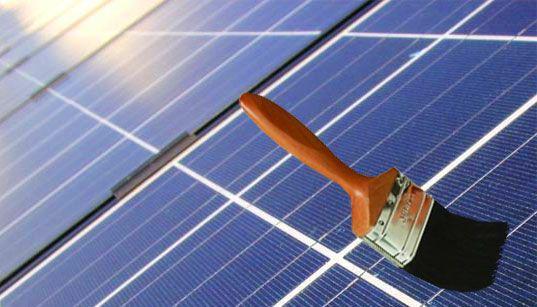Sun-Believable – Paint On Solar Cells
by Australian Solar Quotes
A team of researchers at the University of Notre Dame state they have made major inroads in creating a solar paint that can generate electricity from sunlight. Using semiconducting nanoparticles called quantum dots to produce electricity, the team says it’s well on its way to developing an inexpensive solar paint product they have named “Sun-Believeable”. “By incorporating power-producing nanoparticles, called quantum dots, into a spreadable compound, we’ve made a one-coat solar paint that can be applied to any conductive surface without special equipment,” says the leader of the research, Prashant Kamat, Professor of Science in Chemistry and Biochemistry and an investigator in Notre Dame’s Center for Nano Science and Technology (NDnano). Professor Kamat says the highest light-to-energy conversion the team has attained to date is 1 percent. While that is well under the efficiency of silicon solar panels, he believes given the solar paint can be made cheaply in large quantities and with further efficiency improvements; Sun-Believable could “make a real difference in meeting energy needs in the future.” Described in the journal ACS Nano, Sun-Believable consists of nano-sized particles of titanium dioxide coated with either cadmium sulfide or cadmium selenide and suspended in a water-alcohol mixture to create a paste. The presence of cadmium may cause concern for some as cadmium is a heavy metal and extremely toxic. Cadmium based compounds are also used in some thin film solar panels. The safety of cadmium telluride based solar panels was again questioned earlier this year. Kamat and his team plan to study ways to improve the stability of Sun-Believable. Their research has been funded by the Department of Energy’s Office of Basic Energy Sciences. Notre Dame’s Center for Nano Science and Technology’s mission is to study and manipulate the properties of materials and devices at a nano-scale and observe how they interact with living systems.



